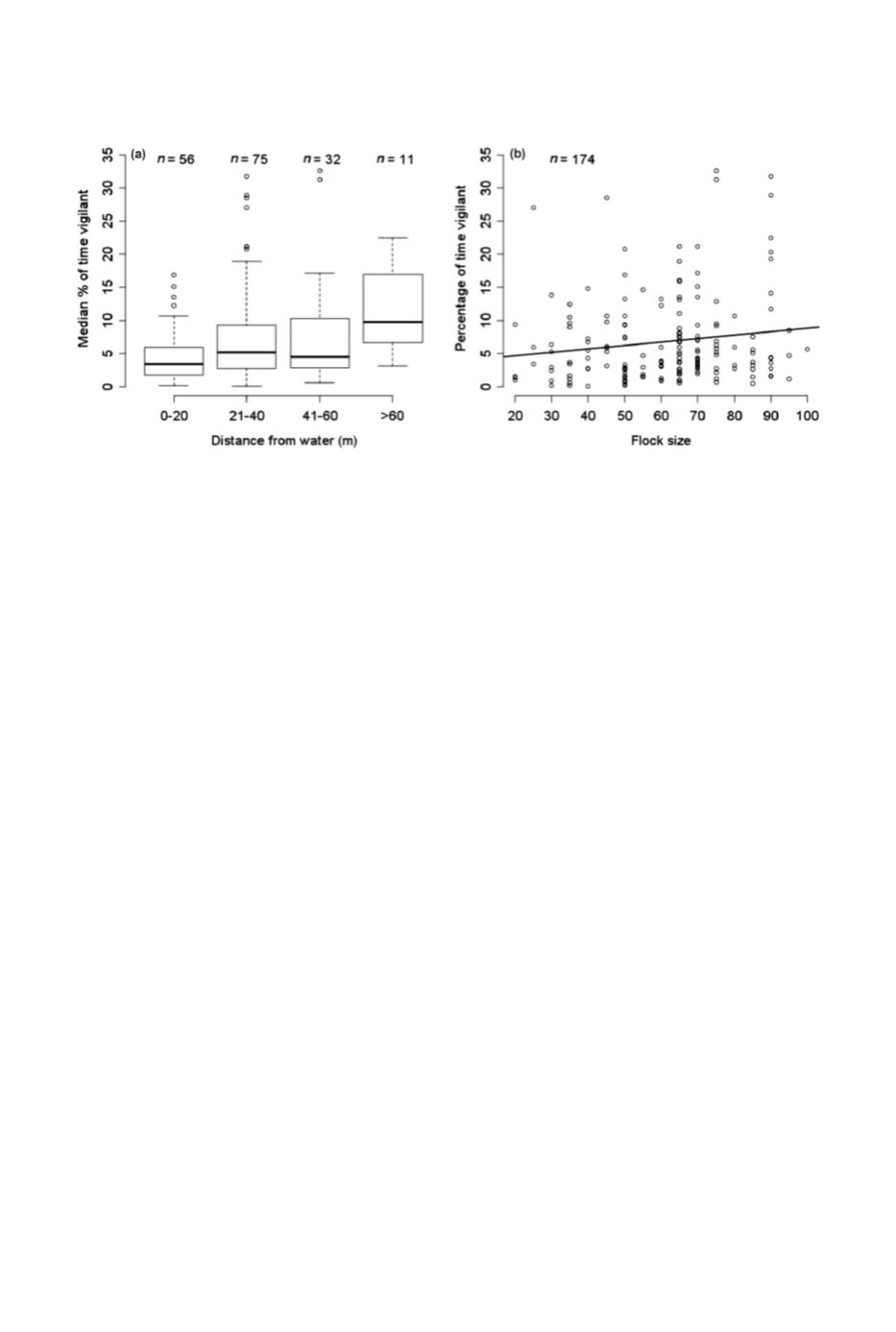
Wigeon vigilance on golf courses 111
©Wildfowl & Wetlands Trust
Wildfowl
(2013) 63: 105–114
Overall, vigilance levels in this study were
below rates previously reported for
American Wigeon and the closely related
Eurasian Wigeon in less human-impacted
habitats (Table 1). This indicates that
wintering flocks on golf courses generally
did not exhibit elevated anti-predatory
behaviour in response to human activity and
frequent disturbance stimuli. Using similar
methods, Randler (2003) found that an
urban population of feral Swan Geese
Anser
cygnoides
had equivalent vigilance levels to
other goose species in more natural
environments. Golf course flocks also
grazed at greater distances from water
(maximum = 80 m) than previously
recorded for wigeon in more natural
conditions (Table 1). On land, grazing is
known to be a “risky” foraging environment
(Mayhew & Houston 1989; Portugal &
Guillemain 2011); thus, the willingness of
flocks to graze at such distances from water
can be interpreted as reduced anti-predatory
behaviour in a human-modified area.
The majority of published research
quantifying adverse waterfowl behavioural
responses to humans has occurred in
relatively undisturbed habitats, in which
birds may not be accustomed to human
intrusion. Several studies have shown that
wildlife occurring in human-modified
habitats can habituate to humans when
there are frequent interactions with no
human persecution (review by Whittaker &
Knight 1998). For example, Donaldson
et al.
(2007) demonstrated that several waterbird
species had relatively relaxed behaviours
towards an approaching observer in
developed as opposed to undeveloped study
sites. In this study, American Wigeon may
have become accustomed to high levels of
human activity which have no adverse
effects on their individual fitness, to the
extent that human presence did not induce
an anti-predatory response. These findings
may provide some support to the “safe-
habitat hypothesis”, which postulates that
environments frequently used by humans
Figure 3.
American Wigeon vigilance behaviour in relation to: a) distance from water (median
percentage of time spent vigilant), and b) flock size, while flocks grazed on suburban golf courses near
Fallbrook, California, USA from 28 January – 22 March 2012.


